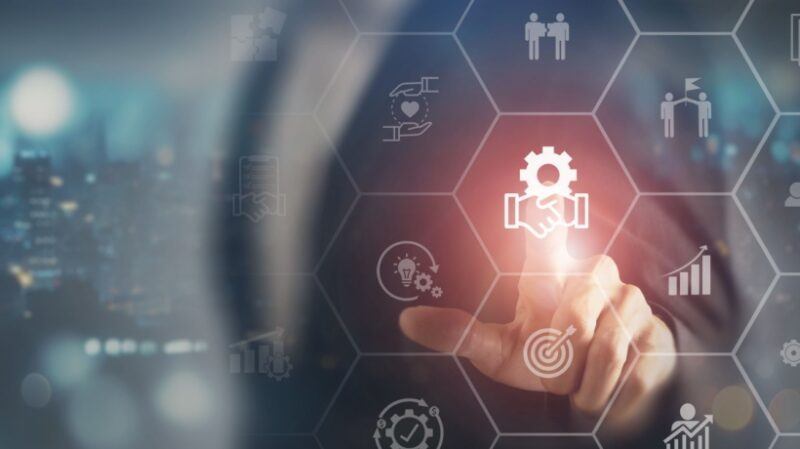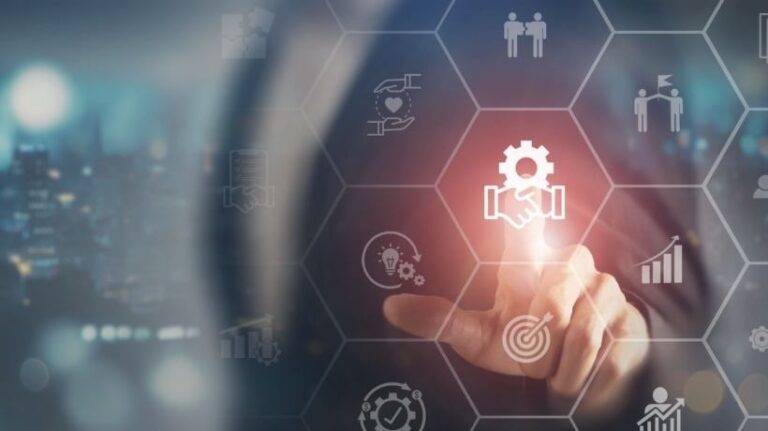
Connected digital learning ecosystems strengthen human resources
Today’s pace of accelerated workplace change requires new approaches to workforce development. Skills become faster and outdated, roles change dynamically, and organizations are rapidly putting pressure on talent to reskill, skill and reappear. In this evolving landscape, the consistency of learning and development (L&D) functions and human resource (HR) planning has not been more important than ever. Enter the Digital L&D Ecosystem.
This is not just about eLearning or Learning Management Systems (LMS) platforms. The latest digital L&D ecosystem is a robust, interconnected network of tools and technologies that support learning at speed and scale. The HR team allows you to move beyond management plans to move towards strategic, agile decisions driven by data, automation and a seamless user experience. This article discusses the core components of the digital L&D ecosystem, their roles in strategic HR planning, and how to help organizations make faster, smarter and greater impact.
Why the Digital L&D Ecosystem Is Important
Traditional L&D systems are designed for static linear programs. Think about compliance training or an annual development plan. Today, the learning is as follows:
It is continuous and is integrated into the workflow. Personalized learner needs. Data information and results driven. Scalable across a distributed workforce.
The latest ecosystem makes it possible. It helps with HR:
Quickly identify skills gaps. Align your learning initiatives with your business strategy. Monitor your progress in real time. Quickly adapt to organizational changes.
In short, the digital L&D ecosystem is the engine behind agile workforce planning.
The latest digital L&D ecosystem core components
Learning Management System
The LMS platform remains the foundation and provides course delivery, progress tracking and compliance management. However, today’s LMS tools have evolved to include:
AI-driven content recommendations. Mobile First Learning.. Why the characteristics of gamification and social learning are important
It enables intensive monitoring while supporting a variety of learning needs.
Learning Experience Platform
The Learning Experience Platform (LXPS) goes beyond structured training by offering.
A personalized learning journey. Curated content from multiple sources. User-driven discovery and social features. Why is it important?
It empowers employees to acquire ownership of learning and explore beyond the required programs.
Skill Intelligence Tool
These tools help organizations map current skills, predict future needs, and identify gaps. Use AI and analytics.
Tag skills for roles and tasks. Training is recommended based on job profiles. Supports internal mobility and career paths. Why is it important?
The L&D programme coordinates directly with strategic workforce plans.
Content Authoring and Curation Tools
These tools allow teams to quickly create or customize their study materials. They are:
Rapid learning development platform. A curation engine that automatically extracts related resources (such as LinkedIn Learning, Coursera). Why is it important?
Learn relevant, timely and scalable content.
HRIS and Talent Management System
The HRIS system integrated with the learning platform provides:
Employee lifecycle data. Performance insights. Succession planning support. Why is it important?
Help the L&D initiative return to broader talent goals.
Analysis and Report Dashboard
Real-time data visualization tools to track:
Learning engagement. Skill development trends. Why business impact metrics (e.g., productivity, retention) are important
It enables evidence-based planning and continuous improvement.
Communication and collaboration tools
Platforms like Slack, MS Team and Zoom have become essential to L&D. They support:
Peer-to-peer learning. Virtual workshops and coaching. Real-time feedback loop. Why is it important?
Embed learning into your everyday workflow.
No Code/Low Code Platform
The low-code/no-code (LC/NC) tool will make the HR and L&D teams as follows:
Build a custom dashboard or onboarding portal. Rapidly test your learning workflows (registration, nudges, reports, etc.) to automate new processes. Why is it important?
Add flexibility and speed to your ecosystem without IT dependencies.
How the ecosystem promotes strategic HR planning
The strength of the digital L&D ecosystem is that its components are integrated and provide insights and results that support agile HR planning.
Prediction and preparation
Skill intelligence tools combined with LMS/LXP data help HR leaders predict gaps between future needs and preparation. Speed of action
LC/NC Automation reduces the time it takes to launch a training program or planning tool. Data-driven decisions
The analysis reveals what is working, what is not working, where you pivot, and lets you know everything from your study budget to your study budget. Internal mobility
Career paths driven by skill data and learning history allow for better inheritance and relocation planning. Large personalization
The ecosystem can simultaneously provide individualized learning experiences to thousands of employees.
Building a digital L&D ecosystem ready for the future: Best Practices
Start with strategy
Map business goals to employee capabilities. This guides you through the roadmap for tool selection and integration. Ensure interoperability
Choose a platform that integrates well with each other. APIs, single sign-on, and shared data layers are important. Empower non-technical users
Use LC/NC tools to reduce bottlenecks, provide autonomy to your HR/L&D teams, and create, test and improve tools. Focus on experience
For learners and administrators, the user experience becomes unstable to be intuitive, engaging and accessible across the device. I embedded learning into the workflow
Integrate learning into tools your team is already using, such as email, Slack, or a project management platform. Adopts the agile concept
Building quickly, continuously measuring, improving frequently. Treat L&D plans like product development.
Suitable Case: Learning during Agile Learning
Global technology companies have transformed their learning strategies using a combination of LMS, LXP, skill intelligence and LC/NC tools. Faced with the skill gap between AI and cloud infrastructure, it:
High potential employees were identified via internal talent data. Use the Skill Intelligence Platform to map the skills you need. Within three weeks I started my personalized learning journey. Auto-registration, reminders, and progress tracking using the No-Code app. They reported an increase in skill proficiency by 40% over six months.
result? A clear gaze between accelerated speeds, improved retention, HR planning and business preparation.
The Evolving Role of the HR and L&D Teams
Once this ecosystem is implemented, HR and L&D leaders will become strategic enablers. Their roles change:
Experience designers from training coordinators. From reactive planners to agile workforce architects. From support features to value drivers that directly impact business outcomes.
Conclusion: Strengthen HR with the right tools at the right time
In a rapidly evolving business environment, agility, speed, and accuracy are no longer options. They are the basis for success in the workforce. A fully integrated digital L&D ecosystem is equipped with HR and L&D leaders to confidently meet these requirements. Combining tools such as LXPS, Skill Intelligence Platform, Analytics Dashboards, and LC/NC applications enables organizations to turn fragmented learning efforts into cohesive strategic advantages.
This ecosystem is not just about responding to change. It places you lead it. With smarter planning, data-driven decision-making, and the ability to personalize learning at scale, HR capabilities could move from a reactive support role to an active architect of business growth.
The message is clear. To build a workforce that is ready for the future, you are ready for the future. The digital L&D ecosystem is LaunchPad. Investment: not only as a high-tech stack, but also as a cultural change to continuous learning, agile planning, and people’s first innovation. Ready to evolve your L&D strategy? We will build an ecosystem that supports all learners and all business goals.


